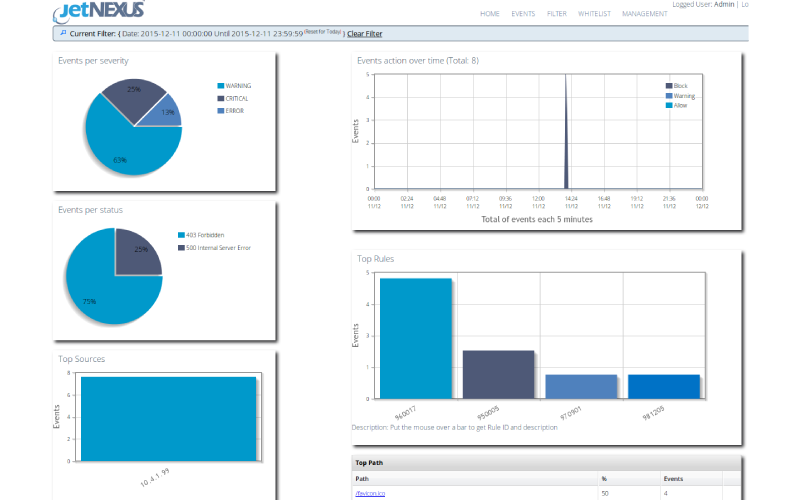
In the realm of network infrastructure and web services, the efficiency of traffic distribution is paramount for ensuring optimal performance and user experience. One of the key tools utilized for this purpose is the load balancer, a device or software that distributes incoming network traffic across multiple servers. In recent years, the concept of a global server for load balancer has emerged as a powerful solution to enhance the effectiveness of load balancing across distributed networks. By implementing a global server for load balancer, organizations can achieve greater scalability, reliability, and performance in managing their network traffic. This article explores the significance of implementing a global server for load balancer and its impact on modern network architectures.
The Key To Efficient Traffic Distribution With Global Server For Load Balancer
At the heart of efficient traffic distribution lies the concept of load balancing, which involves the equitable distribution of incoming network requests among multiple servers. Traditionally, load balancers have been deployed within local or regional networks to manage traffic within a confined geographical area. However, as organizations expand their operations globally and adopt cloud-based infrastructures, the need for a more sophisticated approach to load balancing becomes apparent. This is where the global server for load balancer comes into play, offering a centralized solution for managing traffic across distributed server clusters located in different regions or data centers. By leveraging global server technology, organizations can achieve dynamic traffic routing based on various factors such as server health, geographic proximity, and network latency, thereby optimizing the delivery of services to end users regardless of their location.

Global Server Implementation For Load Balancing
Implementing a global server for load balancing involves deploying a centralized load balancer instance that is capable of directing traffic to multiple server clusters dispersed across different geographic regions. This implementation typically relies on advanced networking protocols and algorithms to intelligently route traffic based on predefined criteria. Moreover, global server implementations often incorporate features such as geo-distributed caching, content delivery networks (CDNs), and intelligent DNS routing to further optimize performance and reliability. By consolidating load balancing functions at a global level, organizations can streamline their network infrastructure, reduce latency, and improve fault tolerance, thereby enhancing the overall user experience.
The Global Server’s Role In Load Balancing
The global server plays a crucial role in orchestrating the flow of network traffic within distributed environments. Acting as a central point of control, the global server coordinates communication between clients and backend servers, ensuring that requests are directed to the most appropriate destination based on factors such as server load, geographic proximity, and network conditions. Additionally, the global server monitors the health and performance of individual server clusters, dynamically adjusting traffic distribution to optimize resource utilization and mitigate potential bottlenecks. By serving as a unified gateway for incoming requests, the global server simplifies the management of load balancing policies and enables seamless scalability as traffic demands fluctuate.
The Global Server For Load Balancer Advantage
The adoption of a global server for load balancer offers several distinct advantages for organizations seeking to optimize their network infrastructure. Firstly, by centralizing load balancing functions, organizations can achieve greater consistency and control over traffic management policies across diverse server environments. This centralized approach also facilitates easier configuration, monitoring, and maintenance of load balancer settings, resulting in improved operational efficiency. Additionally, the global server’s ability to intelligently route traffic based on real-time data enables organizations to deliver content and services with minimal latency and maximum reliability, regardless of the geographic location of end users. Furthermore, by leveraging global server technology, organizations can enhance their disaster recovery capabilities and ensure uninterrupted service availability in the event of server failures or network outages.
Harnessing A Global Server For Load Balancer
Harnessing the full potential of a global server for load balancer requires careful planning, implementation, and optimization. Organizations must evaluate their existing network infrastructure, identify performance bottlenecks, and design a load balancing strategy that aligns with their business objectives and scalability requirements. This may involve deploying redundant global server instances across multiple data centers or cloud regions to ensure high availability and fault tolerance. Additionally, organizations must fine-tune load balancing algorithms, monitor traffic patterns, and adjust routing policies dynamically to adapt to changing network conditions and user demand. By continuously optimizing the utilization of the global server for load balancer, organizations can maximize the efficiency of their network resources and deliver a seamless user experience to customers worldwide.
The Impact Of Global Server For Load Balancer
The implementation of a global server for load balancer can have a profound impact on the performance, scalability, and reliability of an organization’s network infrastructure. By distributing traffic intelligently across geographically dispersed server clusters, organizations can minimize latency, reduce server load, and improve overall system responsiveness. This, in turn, leads to enhanced user satisfaction, increased customer retention, and greater competitiveness in the global marketplace. Moreover, the centralized management and monitoring capabilities offered by the global server empower organizations to proactively identify and address potential issues before they escalate, thereby ensuring continuous service availability and mitigating the risk of downtime or service disruptions. Ultimately, by embracing the power of the global server for load balancer, organizations can unlock new opportunities for innovation, growth, and success in today’s interconnected digital landscape.
Elevating Load Balancer Functionality With Global Server For Load Balancer
The integration of a global server into existing load balancer infrastructure represents a significant leap forward in terms of functionality and performance. By augmenting traditional load balancing techniques with global traffic management capabilities, organizations can achieve a higher degree of flexibility, scalability, and resilience in managing their network traffic. For example, the global server enables organizations to implement dynamic traffic routing based on real-time data analytics, ensuring that requests are directed to the most optimal server locations to minimize latency and maximize throughput. Additionally, the global server’s ability to perform health checks and failover management across distributed server clusters enhances the overall reliability and fault tolerance of the load balancer system. Furthermore, by leveraging advanced caching and content delivery mechanisms, organizations can accelerate content delivery and improve the responsiveness of web applications, thereby enhancing the user experience and driving business growth.
Conclusion
The implementation of a global server for load balancer represents a significant advancement in the field of network traffic management. By centralizing load balancing functions and leveraging global traffic management capabilities, organizations can achieve greater efficiency, scalability, and reliability in delivering content and services to users worldwide. The global server’s ability to intelligently route traffic based on real-time data analytics, coupled with its centralized management and monitoring capabilities, empowers organizations to optimize resource utilization, mitigate performance bottlenecks, and ensure continuous service availability. As the digital landscape continues to evolve and become increasingly interconnected, the global server for load balancer will play a pivotal role in enabling organizations to meet the growing demands of users and maintain a competitive edge in today’s fast-paced business environment.

Sara Dennis, a passionate blog writer based in the United States, indulges in the realms of business, technology, and travel. With a penchant for exploring diverse landscapes and unraveling the latest trends, Sara brings a unique perspective to her readers. Follow her journey as she navigates through the ever-evolving world of blogging.






